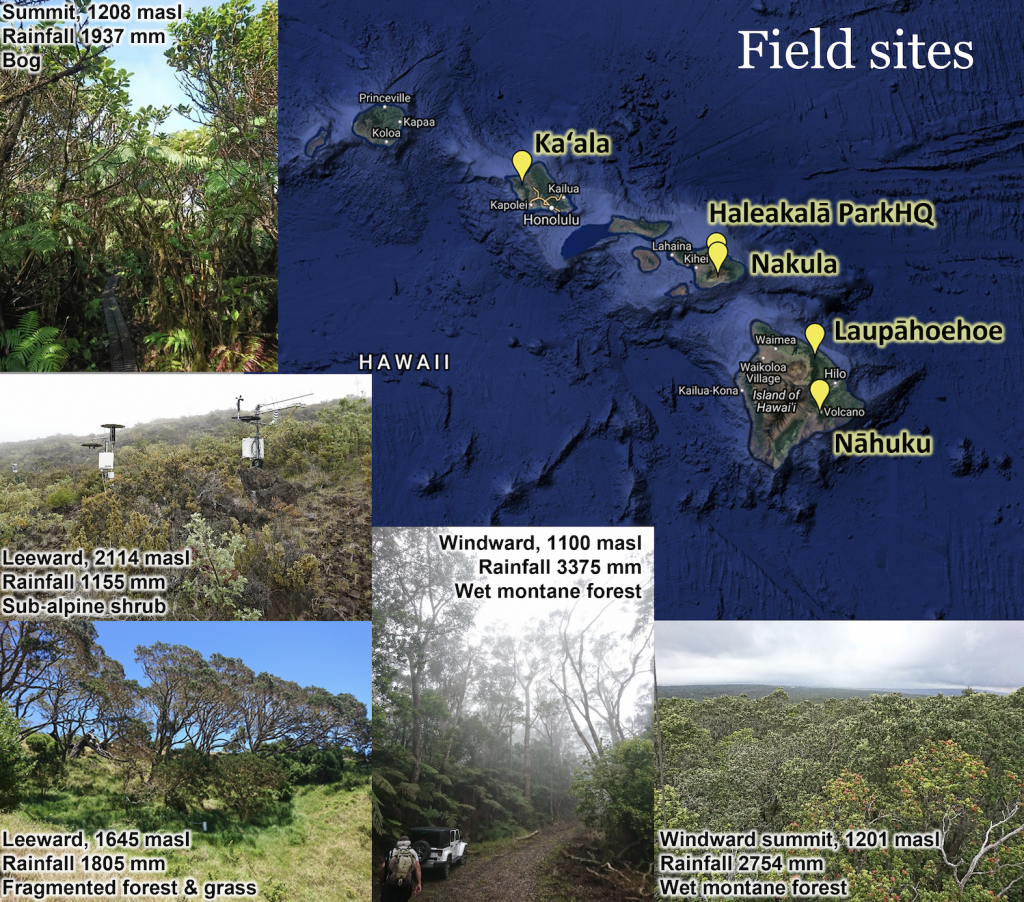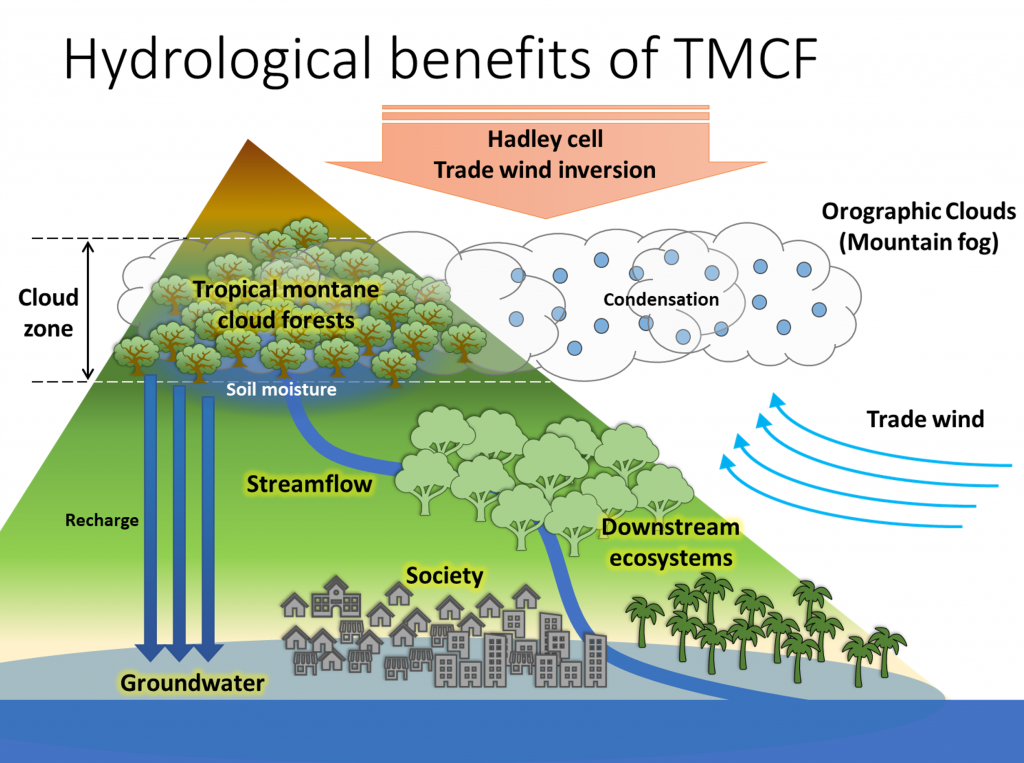Contributed by Han Tseng (tsenghan@hawaii.edu)
Cloud water interception (CWI), the passive capturing of fog water by plants, is a unique ecohydrological process in tropical montane cloud forests that have long been believed to increase water supply. By gaining extra water from the passing clouds, vegetation in the cloud zone on Hawaiian mountains may play an important role in the islands’ hydrological processes and water resources. However, the lack of information about large-scale CWI quantity, distribution, and variability has made evaluating the hydrological benefits of tropical montane cloud forests difficult. The root of the problem lies in the high heterogeneity of CWI patterns and the technical challenges to make measurements and compare between sites. This study aims to enable the mapping of CWI over the Hawaiian Islands. First, fog and CWI were measured at five sites using standardized, precise methods developed to allow for quantitative comparisons. Second, comparisons of CWI with the fog quantity, climatic variables, and vegetation characteristics were compared across sites to identify the main factors of CWI. Finally, a model for CWI prediction for Hawaiian cloud zone ecosystems was developed based on the observations and previous modeling studies. The CWI model performed reasonably well in reproducing the annual CWI at each site and the monthly fluctuations of CWI and can be a useful tool for mapping CWI and making projections of CWI under future climate and land cover changes to support future research and decision-making.
CASC project page
USGS project page





